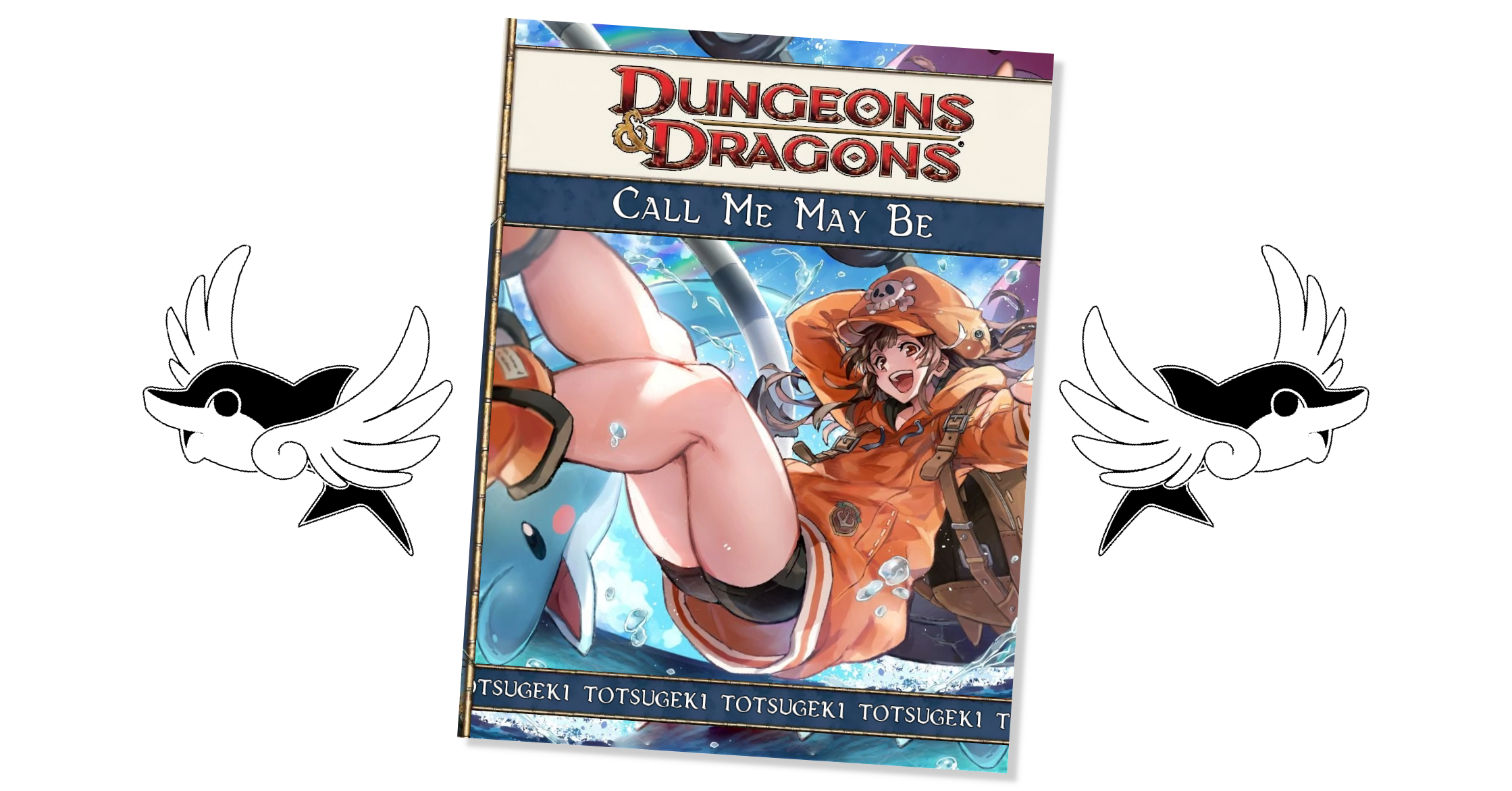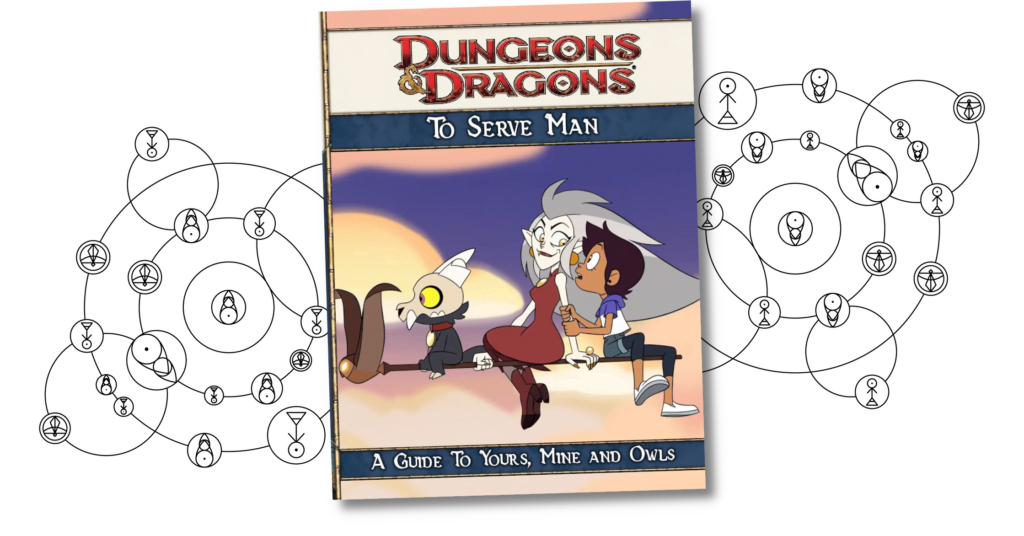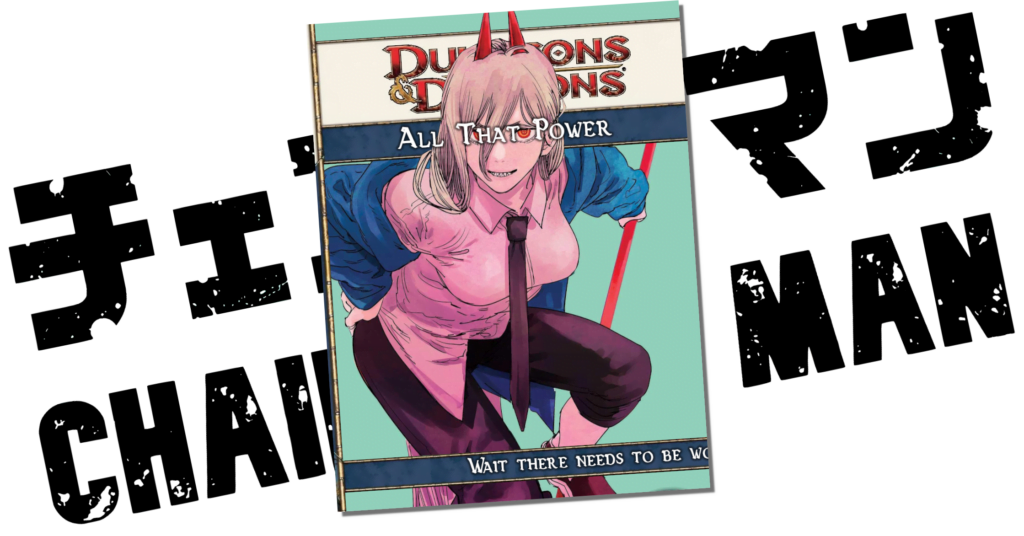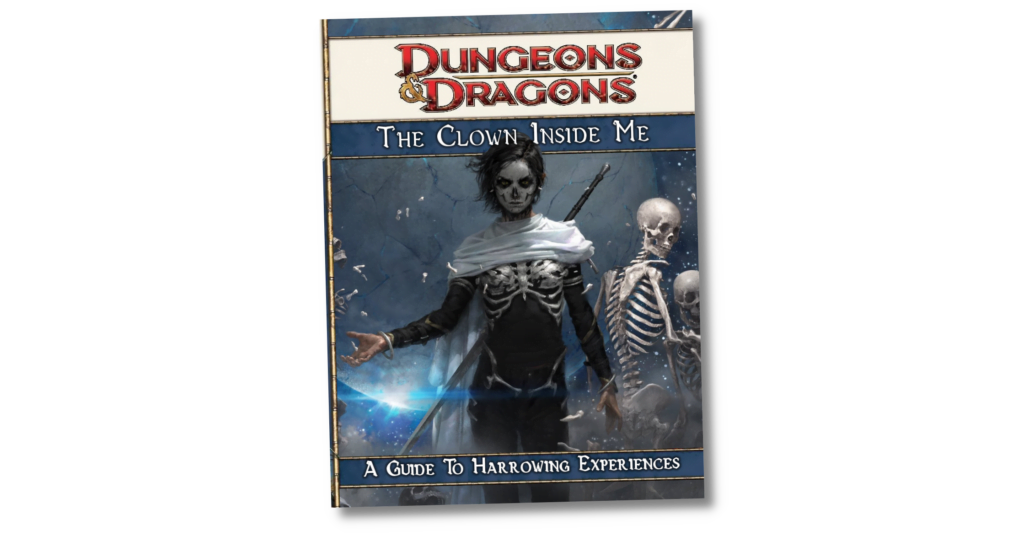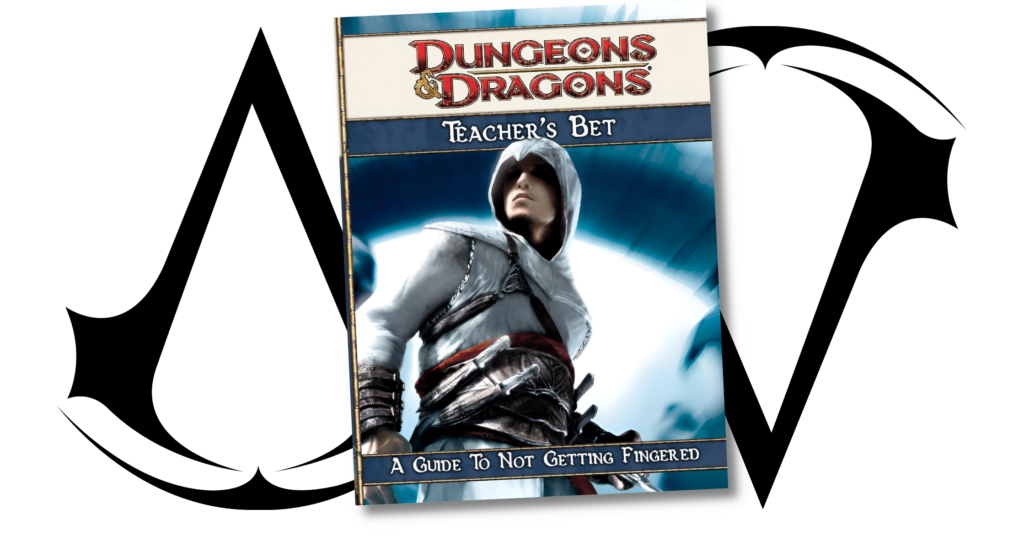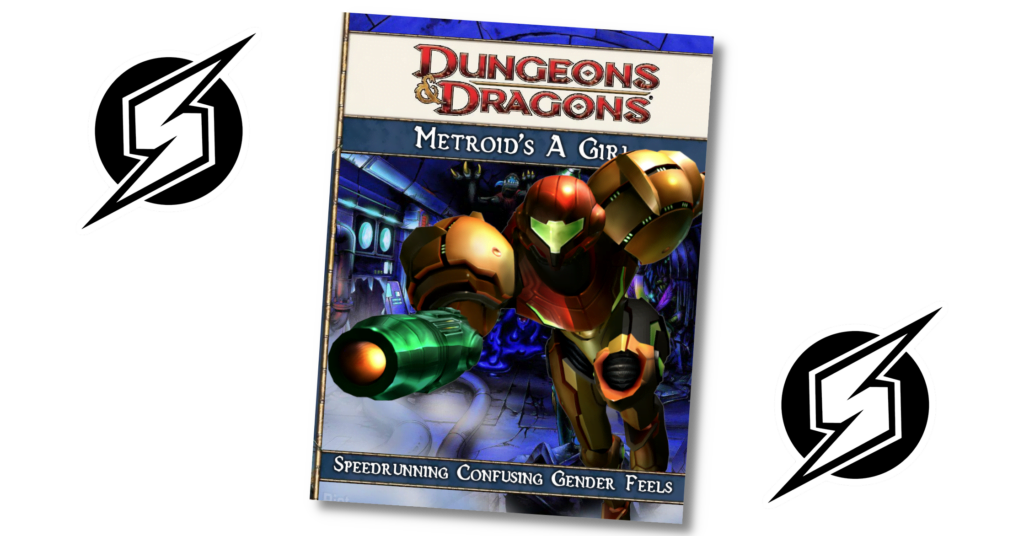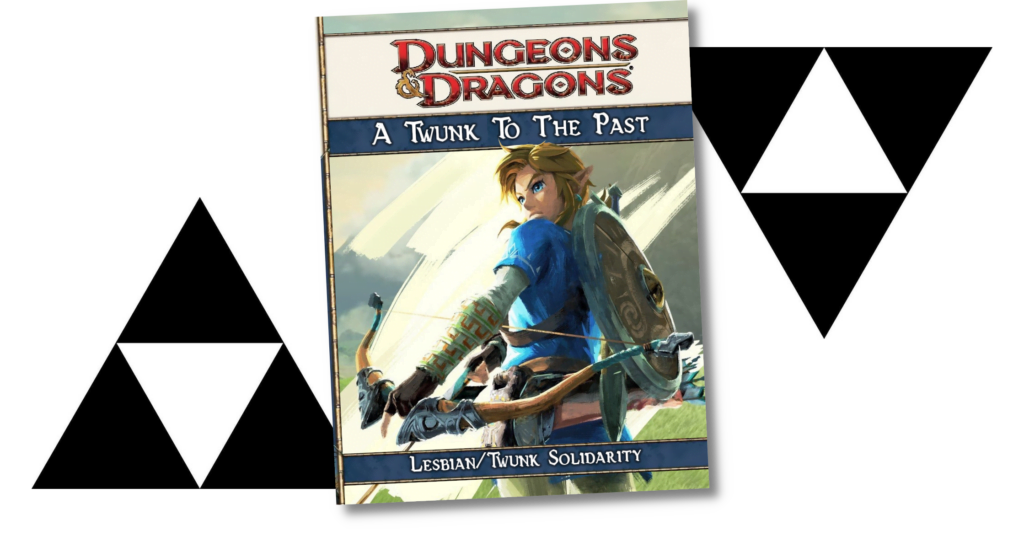How To Be: Eda Clawthorne (in 4e D&D)
In How To Be we’re going to look at a variety of characters from Not D&D and conceptualise how you might go about making a version of that character in the form of D&D that matters on this blog, D&D 4th Edition. Our guidelines are as follows:
- This is going to be a brief rundown of ways to make a character that ‘feels’ like the source character
- This isn’t meant to be comprehensive or authoritative but as a creative exercise
- While not every character can work immediately out of the box, the aim is to make sure they have a character ‘feel’ as soon as possible
- The character has to have the ‘feeling’ of the character by at least midway through Heroic
When building characters in 4th Edition it’s worth remembering that there are a lot of different ways to do the same basic thing. This isn’t going to be comprehensive, or even particularly fleshed out, and instead give you some places to start when you want to make something.
Another thing to remember is that 4e characters tend to be more about collected interactions of groups of things – it’s not that you get a build with specific rules about what you have to take, and when, and why, like you’re lockpicking your way through a design in the hopes of getting an overlap eventually. Character building is about packages, not programs, and we’ll talk about some packages and reference them going forwards.
We’ve talked about The Owl House before in this column, and last time it was about the incredibly cool Made Of Love Interest Amity Blight. But that’s not all that The Owl House offers for cool and interesting character inspiration you should totally use as an excuse to get onto the table in your friendly 4th Edition D&D game –
You do have one of those right?
Why are you reading these then?
Spoiler Warning: I’m going to mention things that happen in The Owl House that change the status quo. If you want to avoid that kinda thing, this is your warning!
Continue Reading →How To Be: Cassandra and Rapunzel from Tangled (In 4e D&D)
In How To Be we’re going to look at a variety of characters from Not D&D and conceptualise how you might go about making a version of that character in the form of D&D that matters on this blog, D&D 4th Edition. Our guidelines are as follows:
- This is going to be a brief rundown of ways to make a character that ‘feels’ like the source character
- This isn’t meant to be comprehensive or authoritative but as a creative exercise
- While not every character can work immediately out of the box, the aim is to make sure they have a character ‘feel’ as soon as possible
- The character has to have the ‘feeling’ of the character by at least midway through Heroic
When building characters in 4th Edition it’s worth remembering that there are a lot of different ways to do the same basic thing. This isn’t going to be comprehensive, or even particularly fleshed out, and instead give you some places to start when you want to make something.
Another thing to remember is that 4e characters tend to be more about collected interactions of groups of things – it’s not that you get a build with specific rules about what you have to take, and when, and why, like you’re lockpicking your way through a design in the hopes of getting an overlap eventually. Character building is about packages, not programs, and we’ll talk about some packages and reference them going forwards.
You know the story of Rapunzel? The kid’s story about a girl with long hair in a tower which you can tell as a bedtime story and it takes maybe ten minutes, fifteen if you’re doing a lot with the voices and details and want to make the witch’s end really grisly? Well, yeah, turns out that got a movie back in the day and then that movie got a TV series and that TV series kicks ass, and so for this Smooch Month, I decided to try and make an article about base-level optimising choices for a pair of characters, a battle couple. In this case, one of those Battle Couple members is Rapunzel, the hero of the story Rapunzel, and the other is, uh
Her name’s Cass.
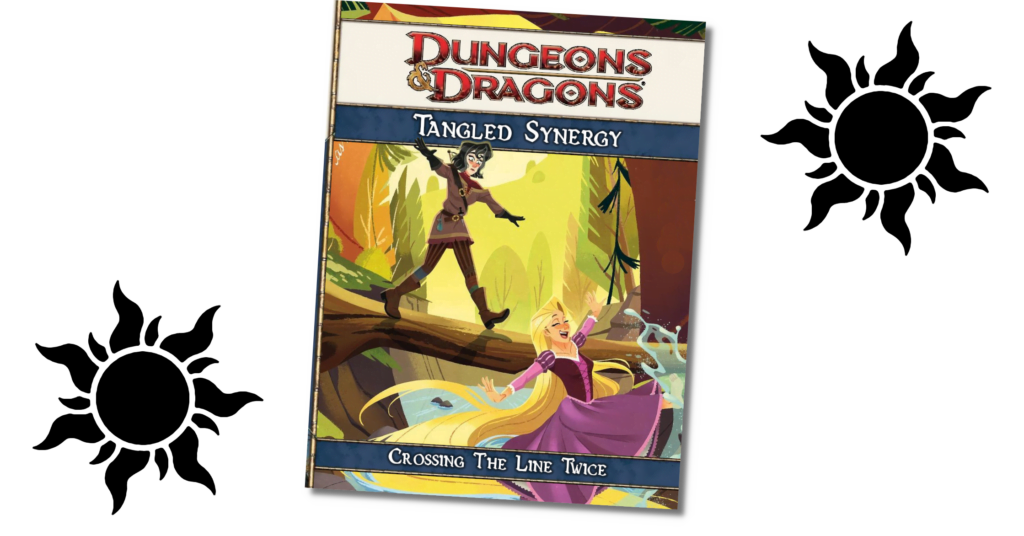
And hey, I’m going to talk about some spoilers for a kid’s cartoon you probably didn’t watch but I do like it and I think if you care about spoilers, well you should watch it without me being the way you find out about the third story arc of the TV series and what it means okay byeee.
Continue Reading →How To Be: Power (in 4e D&D)
In How To Be we’re going to look at a variety of characters from Not D&D and conceptualise how you might go about making a version of that character in the form of D&D that matters on this blog, D&D 4th Edition. Our guidelines are as follows:
- This is going to be a brief rundown of ways to make a character that ‘feels’ like the source character
- This isn’t meant to be comprehensive or authoritative but as a creative exercise
- While not every character can work immediately out of the box, the aim is to make sure they have a character ‘feel’ as soon as possible
- The character has to have the ‘feeling’ of the character by at least midway through Heroic
When building characters in 4th Edition it’s worth remembering that there are a lot of different ways to do the same basic thing. This isn’t going to be comprehensive, or even particularly fleshed out, and instead give you some places to start when you want to make something.
Another thing to remember is that 4e characters tend to be more about collected interactions of groups of things – it’s not that you get a build with specific rules about what you have to take, and when, and why, like you’re lockpicking your way through a design in the hopes of getting an overlap eventually. Character building is about packages, not programs, and we’ll talk about some packages and reference them going forwards.
I suppose, in addition to any of the other standard comments you see from me in a How To Be post, I’m going to be mentioning some details from late in the story of Part 1 of Chainsaw Man. To that end, consider a spoiler warning in effect. You’re going to learn some stuff about how Power’s story goes, in general. No point by point, and I will keep the details broad, and if you’re interested in Chainsaw Man I do recommend you check it out. You know, if you don’t mind an action horror manga where discussing the character requires a mandatory Spoiler Warning I suppose.
Continue Reading →The How To Be Covers of 2023
Hey do you want a single article with nice, clear, readable version of all of 2023’s How To Be book covers? I like to imagine you do, so here’s a post with them in it!
Continue Reading →How To Be: Sothe Pathofradiance (In 4e D&D)
In How To Be we’re going to look at a variety of characters from Not D&D and conceptualise how you might go about making a version of that character in the form of D&D that matters on this blog, D&D 4th Edition. Our guidelines are as follows:
- This is going to be a brief rundown of ways to make a character that ‘feels’ like the source character
- This isn’t meant to be comprehensive or authoritative but as a creative exercise
- While not every character can work immediately out of the box, the aim is to make sure they have a character ‘feel’ as soon as possible
- The character has to have the ‘feeling’ of the character by at least midway through Heroic
When building characters in 4th Edition it’s worth remembering that there are a lot of different ways to do the same basic thing. This isn’t going to be comprehensive, or even particularly fleshed out, and instead give you some places to start when you want to make something.
Another thing to remember is that 4e characters tend to be more about collected interactions of groups of things – it’s not that you get a build with specific rules about what you have to take, and when, and why, like you’re lockpicking your way through a design in the hopes of getting an overlap eventually. Character building is about packages, not programs, and we’ll talk about some packages and reference them going forwards.
Who are we looking at this month? Well, since this series was started off by Hilda from Three Houses, it seems positively rude on my part to not reach once more to the Fire Emblem well, with its wonderfully varied names and … embarrassingly limited mechanical scope.
Let’s look at a character from a Gamecube game about fighting a dragon, or a god, or the black knight, or something.
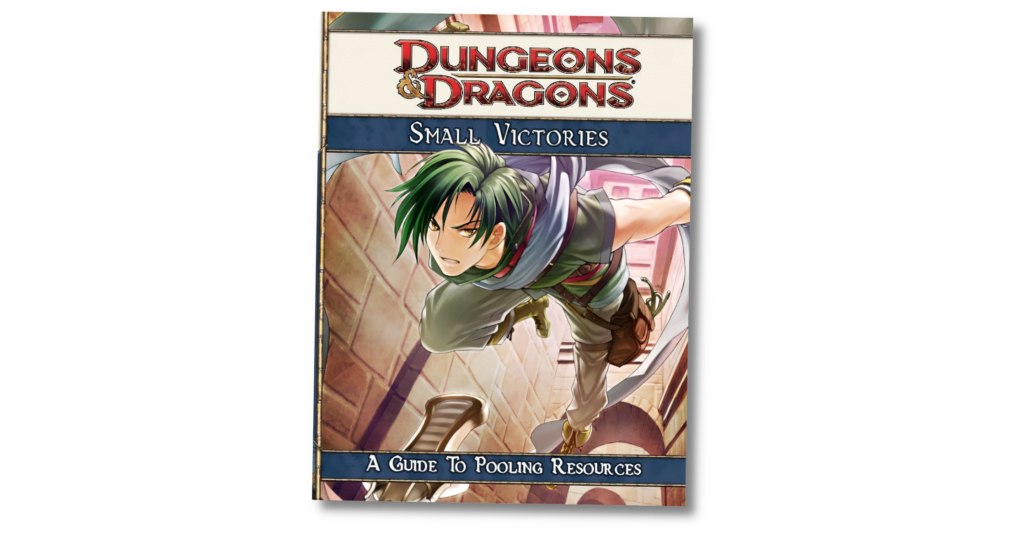
How To Be: Harrowhark Nonagesimus (In 4e D&D)
In How To Be we’re going to look at a variety of characters from Not D&D and conceptualise how you might go about making a version of that character in the form of D&D that matters on this blog, D&D 4th Edition. Our guidelines are as follows:
- This is going to be a brief rundown of ways to make a character that ‘feels’ like the source character
- This isn’t meant to be comprehensive or authoritative but as a creative exercise
- While not every character can work immediately out of the box, the aim is to make sure they have a character ‘feel’ as soon as possible
- The character has to have the ‘feeling’ of the character by at least midway through Heroic
When building characters in 4th Edition it’s worth remembering that there are a lot of different ways to do the same basic thing. This isn’t going to be comprehensive, or even particularly fleshed out, and instead give you some places to start when you want to make something.
Another thing to remember is that 4e characters tend to be more about collected interactions of groups of things – it’s not that you get a build with specific rules about what you have to take, and when, and why, like you’re lockpicking your way through a design in the hopes of getting an overlap eventually. Character building is about packages, not programs, and we’ll talk about some packages and reference them going forwards.
I’ve had this one in the drawer since like April, I didn’t realise just how much I was going to enjoy digging into it two books later.
Oh and hey, sorta-but-not-really spoiler warning? I don’t mean to spoil the books to examine the character, but there is some inextricable hairs that come off with this particular bandaid. Particularly, if you know nothing about the books, there’s a vision of ‘proper’ fandom that says I shouldn’t do anything that gives you any impression of anything in the story, that I should somehow make a hermetically sealable piece of media because someone hypothetically should know nothing about the book when they first engage with it. This is silly. Telling you that, for example, in Harrow The Ninth we get to see that Harrow is a really good necromancer, that shouldn’t be considered as a violence against engagement with the books.
I liked the books, by the way, I think you should check ’em out.
Continue Reading →How To Be: Kaede Last Blade (In 4e D&D)
In How To Be we’re going to look at a variety of characters from Not D&D and conceptualise how you might go about making a version of that character in the form of D&D that matters on this blog, D&D 4th Edition. Our guidelines are as follows:
- This is going to be a brief rundown of ways to make a character that ‘feels’ like the source character
- This isn’t meant to be comprehensive or authoritative but as a creative exercise
- While not every character can work immediately out of the box, the aim is to make sure they have a character ‘feel’ as soon as possible
- The character has to have the ‘feeling’ of the character by at least midway through Heroic
When building characters in 4th Edition it’s worth remembering that there are a lot of different ways to do the same basic thing. This isn’t going to be comprehensive, or even particularly fleshed out, and instead give you some places to start when you want to make something.
Another thing to remember is that 4e characters tend to be more about collected interactions of groups of things – it’s not that you get a build with specific rules about what you have to take, and when, and why, like you’re lockpicking your way through a design in the hopes of getting an overlap eventually. Character building is about packages, not programs, and we’ll talk about some packages and reference them going forwards.
Hey, I left this introduction blank and nobody noticed. Anyway time to talk about a character I’ve already spent thousands of words describing in terms of the negative space created by fighting games that enable a lot of fun interpretation and also selling us the vast and valuable currency that is nothing.
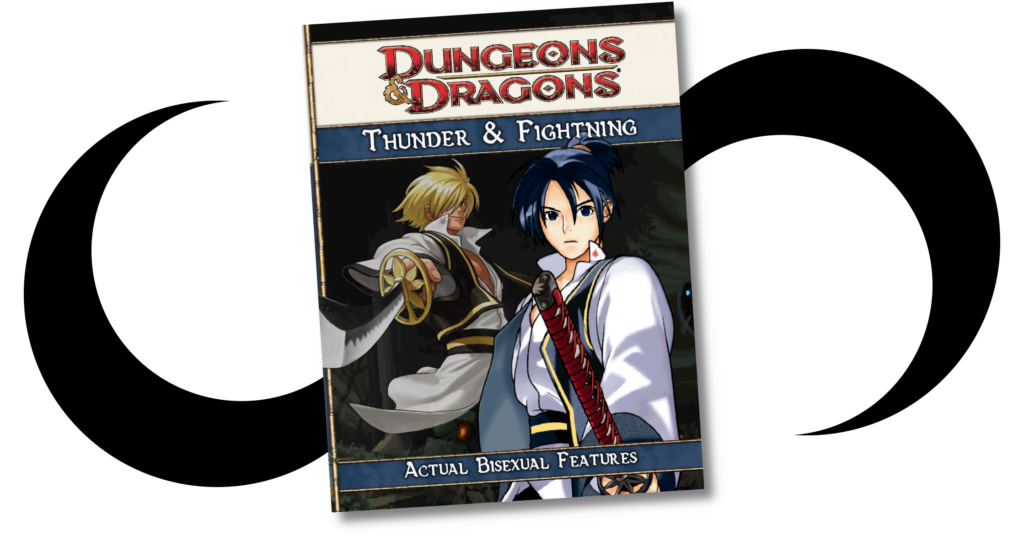
How To Be: Mystique (in 4e D&D)
In How To Be we’re going to look at a variety of characters from Not D&D and conceptualise how you might go about making a version of that character in the form of D&D that matters on this blog, D&D 4th Edition. Our guidelines are as follows:
- This is going to be a brief rundown of ways to make a character that ‘feels’ like the source character
- This isn’t meant to be comprehensive or authoritative but as a creative exercise
- While not every character can work immediately out of the box, the aim is to make sure they have a character ‘feel’ as soon as possible
- The character has to have the ‘feeling’ of the character by at least midway through Heroic
When building characters in 4th Edition it’s worth remembering that there are a lot of different ways to do the same basic thing. This isn’t going to be comprehensive, or even particularly fleshed out, and instead give you some places to start when you want to make something.
Another thing to remember is that 4e characters tend to be more about collected interactions of groups of things – it’s not that you get a build with specific rules about what you have to take, and when, and why, like you’re lockpicking your way through a design in the hopes of getting an overlap eventually. Character building is about packages, not programs, and we’ll talk about some packages and reference them going forwards.
Let’s look at the first* transgender* X-Men*!
Continue Reading →How To be: Altair Ibn La-Ahad (in 4e D&D)
In How To Be we’re going to look at a variety of characters from Not D&D and conceptualise how you might go about making a version of that character in the form of D&D that matters on this blog, D&D 4th Edition. Our guidelines are as follows:
- This is going to be a brief rundown of ways to make a character that ‘feels’ like the source character
- This isn’t meant to be comprehensive or authoritative but as a creative exercise
- While not every character can work immediately out of the box, the aim is to make sure they have a character ‘feel’ as soon as possible
- The character has to have the ‘feeling’ of the character by at least midway through Heroic
When building characters in 4th Edition it’s worth remembering that there are a lot of different ways to do the same basic thing. This isn’t going to be comprehensive, or even particularly fleshed out, and instead give you some places to start when you want to make something.
Another thing to remember is that 4e characters tend to be more about collected interactions of groups of things – it’s not that you get a build with specific rules about what you have to take, and when, and why, like you’re lockpicking your way through a design in the hopes of getting an overlap eventually. Character building is about packages, not programs, and we’ll talk about some packages and reference them going forwards.
Just looking at that name I wonder about if I’ve done a decent job with capitalising that name. Oh, it gets all-capsed by the formatting, but I had to type it in and wanted to get it right, and I don’t know if the ibn should be capitalised or – you know what, never mind, I’m showing a lot more respect to Ubisoft’s Slice Of Brand than I should.
Anyway, hi, remember Assassin’s Creed, that interesting game with a lot of potential? The thing that’s distinct from The Assassins Creed Franchise, a bloated multi-billion dollar proof case for the idea that videogames, maybe, aren’t art?
Continue Reading →How To Be: Amaya from Dragon Prince (in 4e D&D)
In How To Be we’re going to look at a variety of characters from Not D&D and conceptualise how you might go about making a version of that character in the form of D&D that matters on this blog, D&D 4th Edition. Our guidelines are as follows:
- This is going to be a brief rundown of ways to make a character that ‘feels’ like the source character
- This isn’t meant to be comprehensive or authoritative but as a creative exercise
- While not every character can work immediately out of the box, the aim is to make sure they have a character ‘feel’ as soon as possible
- The character has to have the ‘feeling’ of the character by at least midway through Heroic
When building characters in 4th Edition it’s worth remembering that there are a lot of different ways to do the same basic thing. This isn’t going to be comprehensive, or even particularly fleshed out, and instead give you some places to start when you want to make something.
Another thing to remember is that 4e characters tend to be more about collected interactions of groups of things – it’s not that you get a build with specific rules about what you have to take, and when, and why, like you’re lockpicking your way through a design in the hopes of getting an overlap eventually. Character building is about packages, not programs, and we’ll talk about some packages and reference them going forwards.
She’s power, she’s grace, she’ll punch you in the face, she’s a queen, she’s a knight, she’s here to have a fight, she’s Amaya from The Dragon Prince!
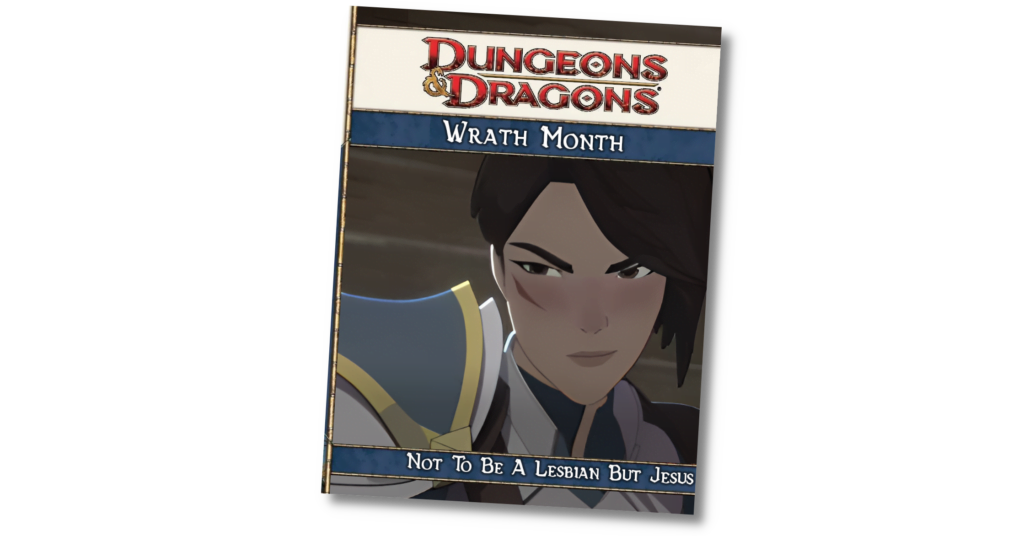
How To Be: Amity Blight (In 4e D&D)
In How To Be we’re going to look at a variety of characters from Not D&D and conceptualise how you might go about making a version of that character in the form of D&D that matters on this blog, D&D 4th Edition. Our guidelines are as follows:
- This is going to be a brief rundown of ways to make a character that ‘feels’ like the source character
- This isn’t meant to be comprehensive or authoritative but as a creative exercise
- While not every character can work immediately out of the box, the aim is to make sure they have a character ‘feel’ as soon as possible
- The character has to have the ‘feeling’ of the character by at least midway through Heroic
When building characters in 4th Edition it’s worth remembering that there are a lot of different ways to do the same basic thing. This isn’t going to be comprehensive, or even particularly fleshed out, and instead give you some places to start when you want to make something.
Another thing to remember is that 4e characters tend to be more about collected interactions of groups of things – it’s not that you get a build with specific rules about what you have to take, and when, and why, like you’re lockpicking your way through a design in the hopes of getting an overlap eventually. Character building is about packages, not programs, and we’ll talk about some packages and reference them going forwards.
Hey, you know The Owl House? That’s a recent animated television program that has all sorts of conversations around it about the way queer representation gets handled and creators get treated and yes, did you know, did you know that Disney are a bad company? It’s the first I heard of it too! Anyway, The Owl House kicks ass so I want to do a How To Be about a character from it and…
And how hard could this be if … oh jeeze, I see the word count.
Okay!
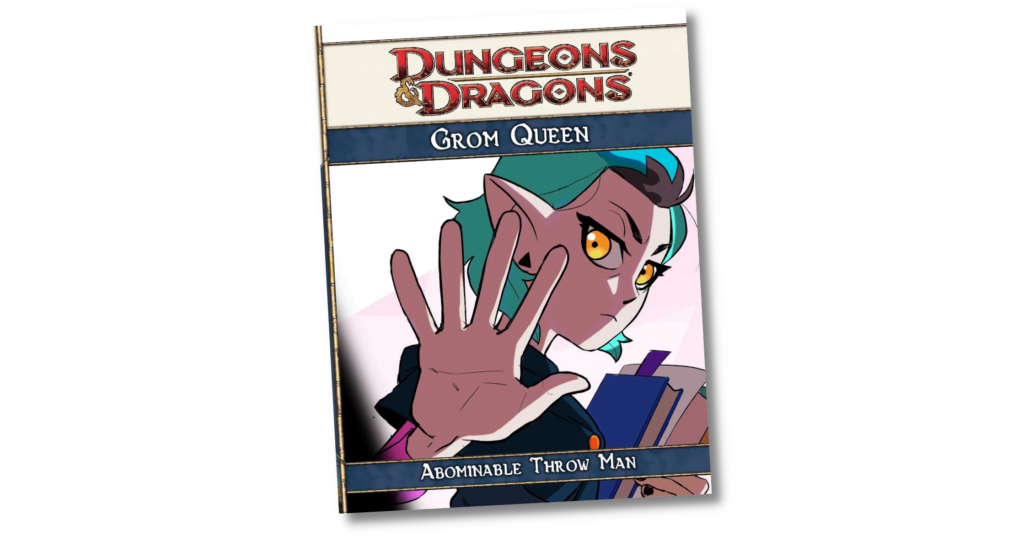
How To Be: Samus Aran (In 4e D&D)
In How To Be we’re going to look at a variety of characters from Not D&D and conceptualise how you might go about making a version of that character in the form of D&D that matters on this blog, D&D 4th Edition. Our guidelines are as follows:
- This is going to be a brief rundown of ways to make a character that ‘feels’ like the source character
- This isn’t meant to be comprehensive or authoritative but as a creative exercise
- While not every character can work immediately out of the box, the aim is to make sure they have a character ‘feel’ as soon as possible
- The character has to have the ‘feeling’ of the character by at least midway through Heroic
When building characters in 4th Edition it’s worth remembering that there are a lot of different ways to do the same basic thing. This isn’t going to be comprehensive, or even particularly fleshed out, and instead give you some places to start when you want to make something.
Another thing to remember is that 4e characters tend to be more about collected interactions of groups of things – it’s not that you get a build with specific rules about what you have to take, and when, and why, like you’re lockpicking your way through a design in the hopes of getting an overlap eventually. Character building is about packages, not programs, and we’ll talk about some packages and reference them going forwards.
Really gotta specify that ‘in 4e D&D’ on this one.
When we talk about How To Be, the point has always been to take characters that are interesting in some particular way then see how we can carry that vibe into the creative space of 4th Edition D&D. What we’ve seen, when we try and make things like a real-world-alike gangster or a robot dinosaur, is that there are some concepts that seem very easy to translate into the play space that really aren’t. Zelgadis is a D&D character and he was very challenging to translate to the game just because he’d already been filtered through another set of different game rules. Minfilia showed us that when a character leaves large parts of their method and ideology as blank slates, there’s a challenge creating something in the space that fulfills that character.
Extremely defined and extremely vague characters, in both directions, are hard.
Anyway, let’s look at Samus Aran.
Continue Reading →How To Be: Link (in 4e D&D)
In How To Be we’re going to look at a variety of characters from Not D&D and conceptualise how you might go about making a version of that character in the form of D&D that matters on this blog, D&D 4th Edition. Our guidelines are as follows:
- This is going to be a brief rundown of ways to make a character that ‘feels’ like the source character
- This isn’t meant to be comprehensive or authoritative but as a creative exercise
- While not every character can work immediately out of the box, the aim is to make sure they have a character ‘feel’ as soon as possible
- The character has to have the ‘feeling’ of the character by at least midway through Heroic
When building characters in 4th Edition it’s worth remembering that there are a lot of different ways to do the same basic thing. This isn’t going to be comprehensive, or even particularly fleshed out, and instead give you some places to start when you want to make something.
Another thing to remember is that 4e characters tend to be more about collected interactions of groups of things – it’s not that you get a build with specific rules about what you have to take, and when, and why, like you’re lockpicking your way through a design in the hopes of getting an overlap eventually. Character building is about packages, not programs, and we’ll talk about some packages and reference them going forwards.
With Frame Fatales running, I wanted to talk about a character who has a strong presence in speedrunning, and a character that owns a special place in the heart of the community, and a character who helps people feel connected to something.
I figured what better to do, than look at a Link.
Continue Reading →How To Be: Inu-Yasha (in 4e D&D)
In How To Be we’re going to look at a variety of characters from Not D&D and conceptualise how you might go about making a version of that character in the form of D&D that matters on this blog, D&D 4th Edition. Our guidelines are as follows:
- This is going to be a brief rundown of ways to make a character that ‘feels’ like the source character
- This isn’t meant to be comprehensive or authoritative but as a creative exercise
- While not every character can work immediately out of the box, the aim is to make sure they have a character ‘feel’ as soon as possible
- The character has to have the ‘feeling’ of the character by at least midway through Heroic
When building characters in 4th Edition it’s worth remembering that there are a lot of different ways to do the same basic thing. This isn’t going to be comprehensive, or even particularly fleshed out, and instead give you some places to start when you want to make something.
Another thing to remember is that 4e characters tend to be more about collected interactions of groups of things – it’s not that you get a build with specific rules about what you have to take, and when, and why, like you’re lockpicking your way through a design in the hopes of getting an overlap eventually. Character building is about packages, not programs, and we’ll talk about some packages and reference them going forwards.
Smooch month has rolled around and that means it’s time to, once again, break out the rulebooks and try to find a way to make another Ranma 1/2 character in 4th edition D&D.
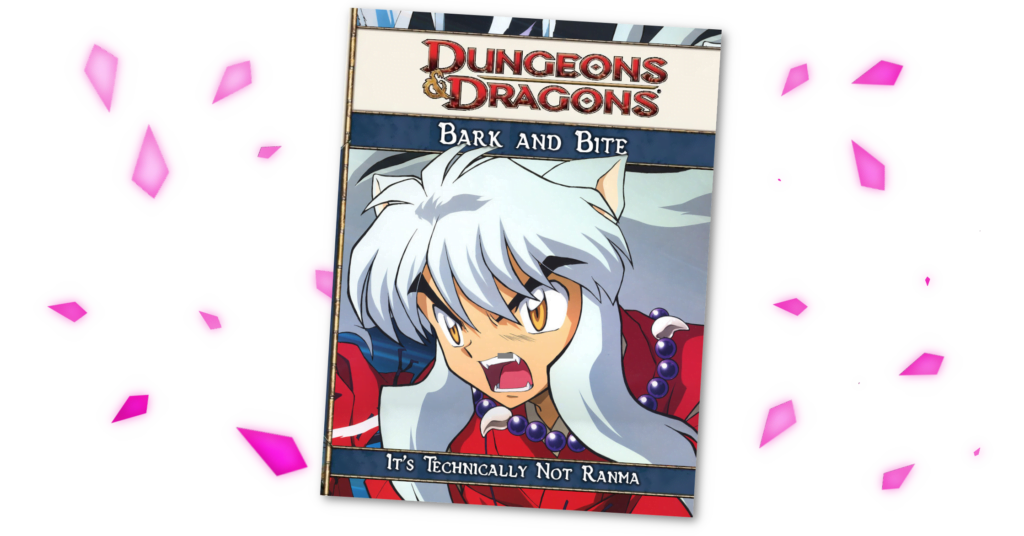
How To Be: Cyclops (In 4e D&D)
In How To Be we’re going to look at a variety of characters from Not D&D and conceptualise how you might go about making a version of that character in the form of D&D that matters on this blog, D&D 4th Edition. Our guidelines are as follows:
- This is going to be a brief rundown of ways to make a character that ‘feels’ like the source character
- This isn’t meant to be comprehensive or authoritative but as a creative exercise
- While not every character can work immediately out of the box, the aim is to make sure they have a character ‘feel’ as soon as possible
- The character has to have the ‘feeling’ of the character by at least midway through Heroic
When building characters in 4th Edition it’s worth remembering that there are a lot of different ways to do the same basic thing. This isn’t going to be comprehensive, or even particularly fleshed out, and instead give you some places to start when you want to make something.
Another thing to remember is that 4e characters tend to be more about collected interactions of groups of things – it’s not that you get a build with specific rules about what you have to take, and when, and why, like you’re lockpicking your way through a design in the hopes of getting an overlap eventually. Character building is about packages, not programs, and we’ll talk about some packages and reference them going forwards.
I’m always left wondering, month to month if I can come up with an interesting example for How To Be, where I wonder when I’m going to feel like I’m running out of options. For GDQ I was considering a list of ‘speedrunning iconic characters considered, then rejected the entire list because I realised that, once again, I could imagine a way to represent that character, a way to capture the essence. Plus, there’s always different veins of narrative, different types of stories to consider like this.
A long time ago, when I first started playing RPGs, a friend (hi BigAngry) said to me, the thing with RPGs is that once you play in them you’ll notice the way that literally every single piece of fan media presents you a list of toys, things you can always look at, then point to and say ‘I want that.’
And I thought about another friend who doesn’t care about RPGs, and I thought: Yeah. Let’s do Cyclops.
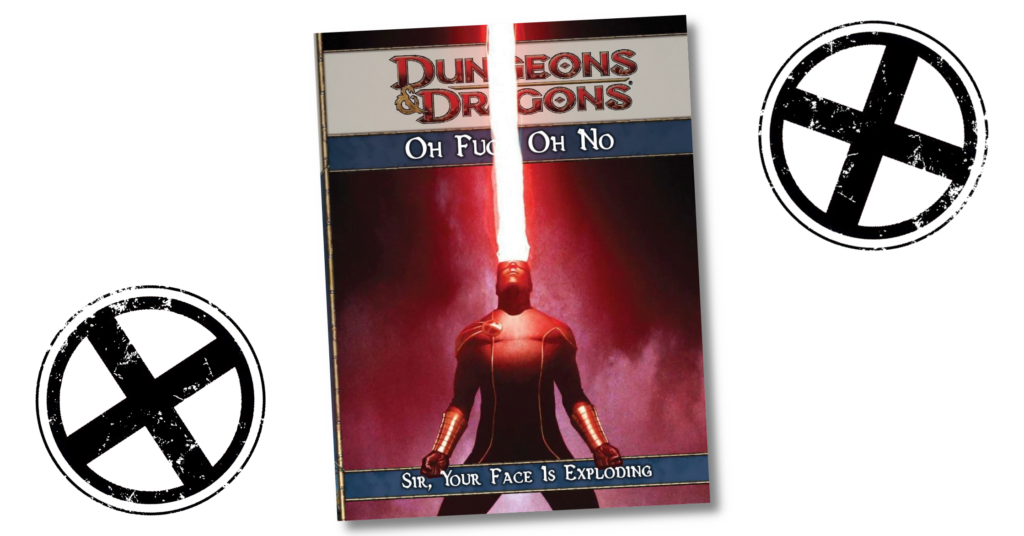
The How To Be Covers of 2022
Once more we make our way to an end of a year, and I take an opportunity to reflect on my monthly How To Be articles. Or really, I show you all the covers again because I’m really proud of them, in part because they’re funny and in part because I worked hard on little details and you will appreciate them.
Continue Reading →How To Be: The Very Best, Like No-one Ever Was (Dun Dun D-Dun) (In 4e D&D)
In How To Be we’re going to look at a variety of characters from Not D&D and conceptualise how you might go about making a version of that character in the form of D&D that matters on this blog, D&D 4th Edition. Our guidelines are as follows:
- This is going to be a brief rundown of ways to make a character that ‘feels’ like the source character
- This isn’t meant to be comprehensive or authoritative but as a creative exercise
- While not every character can work immediately out of the box, the aim is to make sure they have a character ‘feel’ as soon as possible
- The character has to have the ‘feeling’ of the character by at least midway through Heroic
When building characters in 4th Edition it’s worth remembering that there are a lot of different ways to do the same basic thing. This isn’t going to be comprehensive, or even particularly fleshed out, and instead give you some places to start when you want to make something.
Another thing to remember is that 4e characters tend to be more about collected interactions of groups of things – it’s not that you get a build with specific rules about what you have to take, and when, and why, like you’re lockpicking your way through a design in the hopes of getting an overlap eventually. Character building is about packages, not programs, and we’ll talk about some packages and reference them going forwards.
You know, it might just be because I’ve been thinking about pets and subordinate characters, what if the inspiration for your character in a 4e campaign is being someone who has for some reason, a monster that works at their side? What kind of character can produce monsters out of nowhere – like they can just pull them out of their pocket?

How To Be: A Meguca (In 4e D&D)
In How To Be we’re going to look at a variety of characters from Not D&D and conceptualise how you might go about making a version of that character in the form of D&D that matters on this blog, D&D 4th Edition. Our guidelines are as follows:
- This is going to be a brief rundown of ways to make a character that ‘feels’ like the source character
- This isn’t meant to be comprehensive or authoritative but as a creative exercise
- While not every character can work immediately out of the box, the aim is to make sure they have a character ‘feel’ as soon as possible
- The character has to have the ‘feeling’ of the character by at least midway through Heroic
When building characters in 4th Edition it’s worth remembering that there are a lot of different ways to do the same basic thing. This isn’t going to be comprehensive, or even particularly fleshed out, and instead give you some places to start when you want to make something.
Another thing to remember is that 4e characters tend to be more about collected interactions of groups of things – it’s not that you get a build with specific rules about what you have to take, and when, and why, like you’re lockpicking your way through a design in the hopes of getting an overlap eventually. Character building is about packages, not programs, and we’ll talk about some packages and reference them going forwards.
In this, a Dreadful Month, maybe you need a radiant light. Maybe you need something that makes you feel warm and fuzzy and happy in this time of long nights. In which case, let’s look to the most successful Monsters Inc fanfiction anime there is, and look at the magical girls from Puella Magi Madoka Magica as we ask what it would take to Become Meguca.
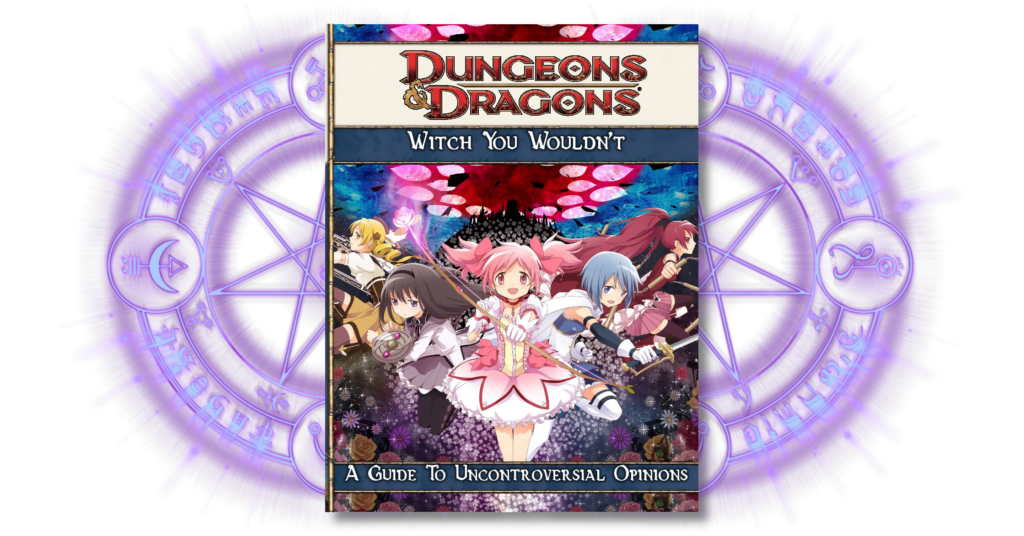
Spoiler Policy: I don’t intend to spoil much of the actual story of Puella Magi Madoka Magica. Instead, I intend to approach this exercise looking at the characters as they present, with minimal explanation of the actual narrative of their native series, though there will be some discussion in a broad sense of what characters’ powers are.
This is in part because these characters have very strong vibes to use as basis for a character but also because it’s much funnier.
Continue Reading →How To Be: Lalo Salamanca (In 4e D&D)
In How To Be we’re going to look at a variety of characters from Not D&D and conceptualise how you might go about making a version of that character in the form of D&D that matters on this blog, D&D 4th Edition. Our guidelines are as follows:
- This is going to be a brief rundown of ways to make a character that ‘feels’ like the source character
- This isn’t meant to be comprehensive or authoritative but as a creative exercise
- While not every character can work immediately out of the box, the aim is to make sure they have a character ‘feel’ as soon as possible
- The character has to have the ‘feeling’ of the character by at least midway through Heroic
When building characters in 4th Edition it’s worth remembering that there are a lot of different ways to do the same basic thing. This isn’t going to be comprehensive, or even particularly fleshed out, and instead give you some places to start when you want to make something.
Another thing to remember is that 4e characters tend to be more about collected interactions of groups of things – it’s not that you get a build with specific rules about what you have to take, and when, and why, like you’re lockpicking your way through a design in the hopes of getting an overlap eventually. Character building is about packages, not programs, and we’ll talk about some packages and reference them going forwards.
There’s a real challenge in translating anime characters to other forms of media, and that’s why once again, we go back to the most successful anime of the last five years, which had its grand conclusion just last month. Yes, people love Better Call Saul, and Breaking Bad and then maybe they’ll mention El Camino and maaaybe they’ll mention Slippin’ Jimmy, but no matter how you enjoy it, we all know one of the greatest anime villains of all time stands tall, possibly while murmuring the name Werner… Ziegler…
It’s Lalo!
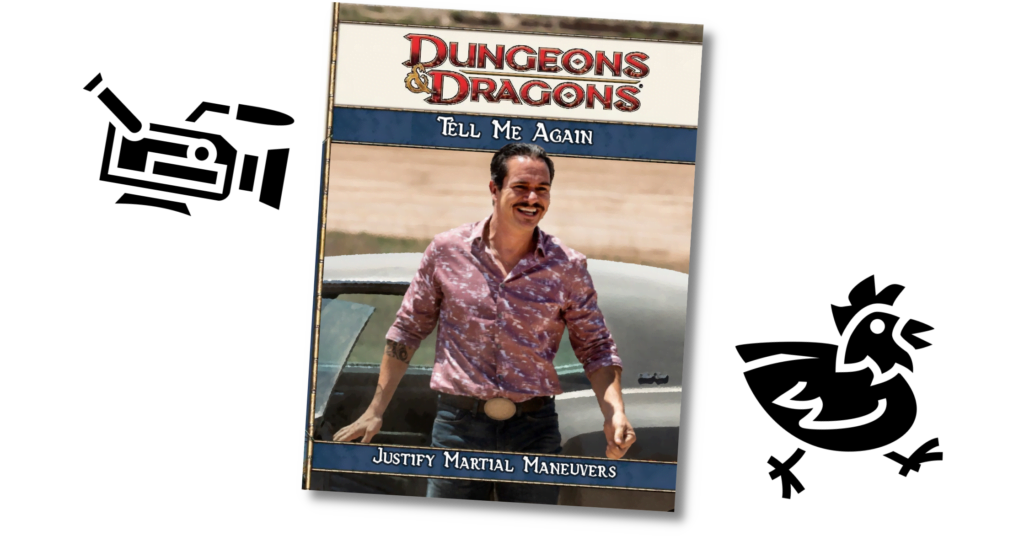
Spoilers but kinda? For Season 4 and onward of Better Call Saul.
Continue Reading →How To Be: Bridget (in 4e D&D)
In How To Be we’re going to look at a variety of characters from Not D&D and conceptualise how you might go about making a version of that character in the form of D&D that matters on this blog, D&D 4th Edition. Our guidelines are as follows:
- This is going to be a brief rundown of ways to make a character that ‘feels’ like the source character
- This isn’t meant to be comprehensive or authoritative but as a creative exercise
- While not every character can work immediately out of the box, the aim is to make sure they have a character ‘feel’ as soon as possible
- The character has to have the ‘feeling’ of the character by at least midway through Heroic
When building characters in 4th Edition it’s worth remembering that there are a lot of different ways to do the same basic thing. This isn’t going to be comprehensive, or even particularly fleshed out, and instead give you some places to start when you want to make something.
Another thing to remember is that 4e characters tend to be more about collected interactions of groups of things – it’s not that you get a build with specific rules about what you have to take, and when, and why, like you’re lockpicking your way through a design in the hopes of getting an overlap eventually. Character building is about packages, not programs, and we’ll talk about some packages and reference them going forwards.
You don’t have long on this earth. THE FASTEST SINNER WILL EDIT THE TEXT. MISSION ONE. WHATABURGER! A MIDNIGHT MEAL WITH THE DEVIL
THE CARBUNCLE ATE ITSELF! FIRST HOWDY!
LET’S GET THE MONEY. GODS PLAY DICE WITH THE UNIVERSE, WHY DON’T YOU GIVE HER A CALL. FIRST SHOWDOWN ATTACK, Crank it To 11! WORLD IS A FUCK
Round the first: Grind!
It’s Labor Day.
Let’s talk about Guilty Gear.
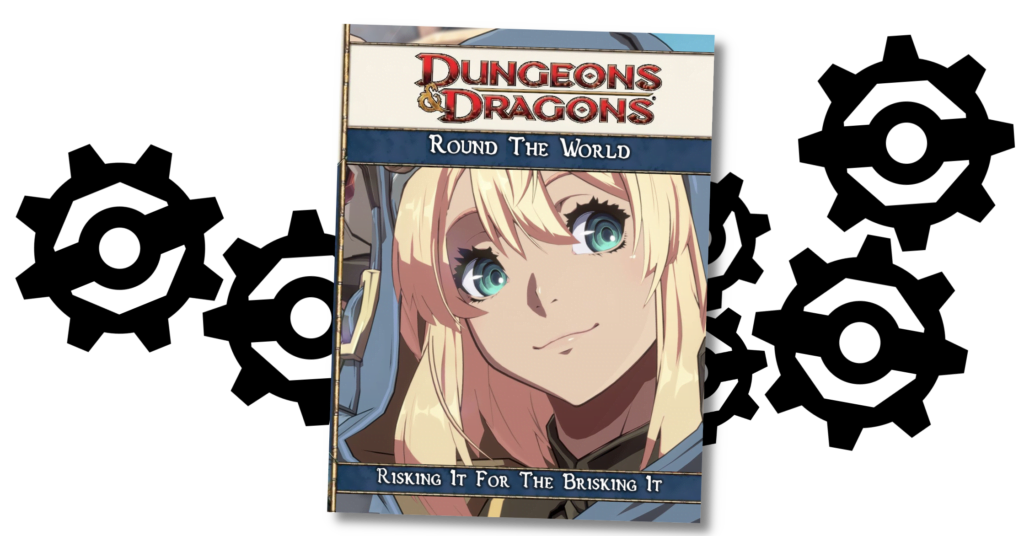
Content Warning: I’m going to have to put some disclaimers up for some political information around Bridget and trans identities before I get into the meat of things, so if you’re not interested in that and you’re already aware of this situation just jump three paragraphs.
Continue Reading →How To Be: Scorpia
In How To Be we’re going to look at a variety of characters from Not D&D and conceptualise how you might go about making a version of that character in the form of D&D that matters on this blog, D&D 4th Edition. Our guidelines are as follows:
- This is going to be a brief rundown of ways to make a character that ‘feels’ like the source character
- This isn’t meant to be comprehensive or authoritative but as a creative exercise
- While not every character can work immediately out of the box, the aim is to make sure they have a character ‘feel’ as soon as possible
- The character has to have the ‘feeling’ of the character by at least midway through Heroic
When building characters in 4th Edition it’s worth remembering that there are a lot of different ways to do the same basic thing. This isn’t going to be comprehensive, or even particularly fleshed out, and instead give you some places to start when you want to make something.
Another thing to remember is that 4e characters tend to be more about collected interactions of groups of things – it’s not that you get a build with specific rules about what you have to take, and when, and why, like you’re lockpicking your way through a design in the hopes of getting an overlap eventually. Character building is about packages, not programs, and we’ll talk about some packages and reference them going forwards.
One of my favourite things about media is the way that just because I don’t like a work or a show or a plot or whatever it doesn’t have to mean I don’t like or won’t have a reason to be interested in something in that. Moments, scenes, characters, dialogue, all sorts of small things can be extracted from their source and appreciated for what they are and what they could be even if they wouldn’t be that way in the work they’re from. I don’t have to like Rent to think that Out Tonight is a banger, that kind of thing.
So to with She-Ra and the Princess of Power. I didn’t like the show that much and I stopped watching it and that’s entirely okay, but while I watched it I did meet a character I liked, and it seems that lots of other people like. Let’s examine then how we’d go about making the good-natured princess himbo, Scorpia.
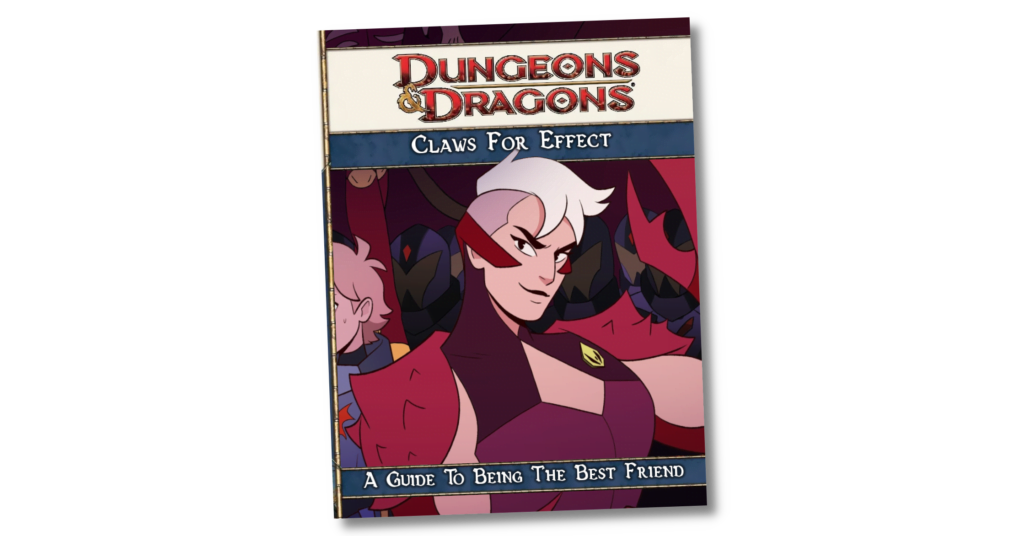
How To Be: Sheik (In 4e D&D)
In How To Be we’re going to look at a variety of characters from Not D&D and conceptualise how you might go about making a version of that character in the form of D&D that matters on this blog, D&D 4th Edition. Our guidelines are as follows:
- This is going to be a brief rundown of ways to make a character that ‘feels’ like the source character
- This isn’t meant to be comprehensive or authoritative but as a creative exercise
- While not every character can work immediately out of the box, the aim is to make sure they have a character ‘feel’ as soon as possible
- The character has to have the ‘feeling’ of the character by at least midway through Heroic
When building characters in 4th Edition it’s worth remembering that there are a lot of different ways to do the same basic thing. This isn’t going to be comprehensive, or even particularly fleshed out, and instead give you some places to start when you want to make something.
Another thing to remember is that 4e characters tend to be more about collected interactions of groups of things – it’s not that you get a build with specific rules about what you have to take, and when, and why, like you’re lockpicking your way through a design in the hopes of getting an overlap eventually. Character building is about packages, not programs, and we’ll talk about some packages and reference them going forwards.
It’s June, it’s Fox’s birthday month, and it’s pride month, which means I have to find a character who’s some variety of queer, and also one of Fox’s favourite characters. The good news is that every single one of Fox’s favourite characters is queer, because they’re her favourite characters, and that’s how that works. I’m a media studies scholar.
Let’s talk about a contentious argument from 2001, which we’re all over now. Let’s talk about Sheik, from The Legend of Zelda: Ocarina of Time.
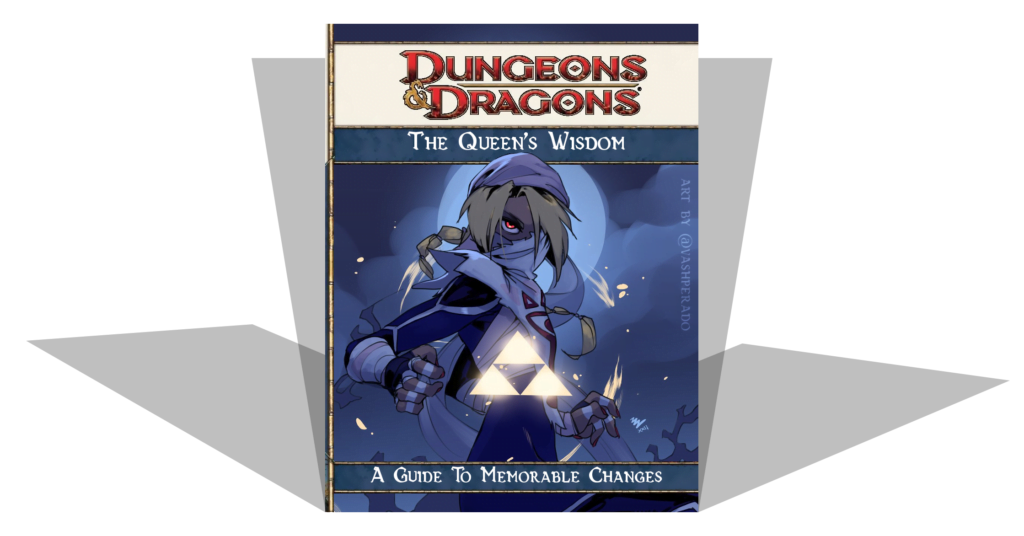
How To Be: Kyo Kusanagi (in 4e D&D)
In How To Be we’re going to look at a variety of characters from Not D&D and conceptualise how you might go about making a version of that character in the form of D&D that matters on this blog, D&D 4th Edition. Our guidelines are as follows:
- This is going to be a brief rundown of ways to make a character that ‘feels’ like the source character
- This isn’t meant to be comprehensive or authoritative but as a creative exercise
- While not every character can work immediately out of the box, the aim is to make sure they have a character ‘feel’ as soon as possible
- The character has to have the ‘feeling’ of the character by at least midway through Heroic
When building characters in 4th Edition it’s worth remembering that there are a lot of different ways to do the same basic thing. This isn’t going to be comprehensive, or even particularly fleshed out, and instead give you some places to start when you want to make something.
Another thing to remember is that 4e characters tend to be more about collected interactions of groups of things – it’s not that you get a build with specific rules about what you have to take, and when, and why, like you’re lockpicking your way through a design in the hopes of getting an overlap eventually. Character building is about packages, not programs, and we’ll talk about some packages and reference them going forwards.
Buckle up Dweebenheimer it’s time to KING THE FIGHTERS!
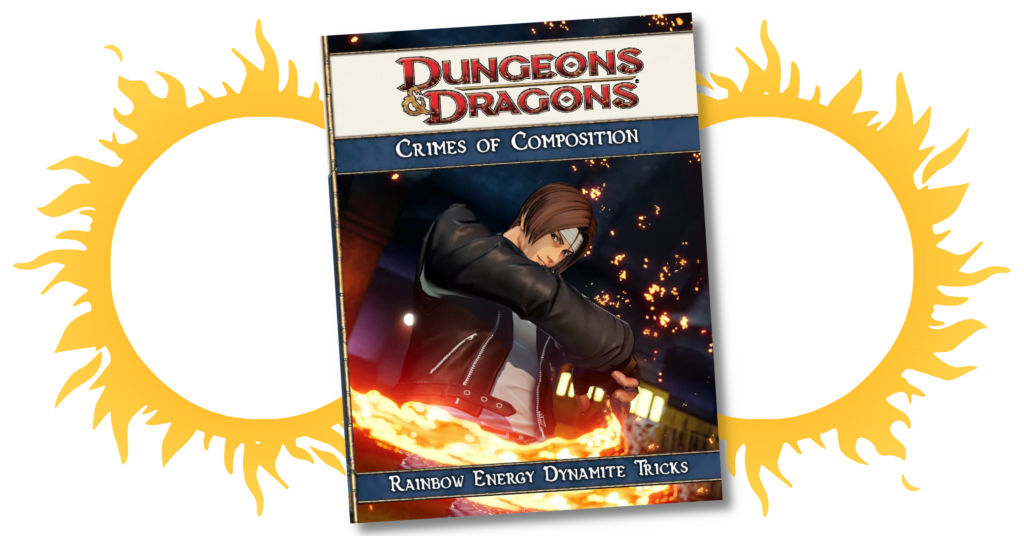
How To Be: Minfilia Warde (in 4e D&D)
In How To Be we’re going to look at a variety of characters from Not D&D and conceptualise how you might go about making a version of that character in the form of D&D that matters on this blog, D&D 4th Edition. Our guidelines are as follows:
- This is going to be a brief rundown of ways to make a character that ‘feels’ like the source character
- This isn’t meant to be comprehensive or authoritative but as a creative exercise
- While not every character can work immediately out of the box, the aim is to make sure they have a character ‘feel’ as soon as possible
- The character has to have the ‘feeling’ of the character by at least midway through Heroic
When building characters in 4th Edition it’s worth remembering that there are a lot of different ways to do the same basic thing. This isn’t going to be comprehensive, or even particularly fleshed out, and instead give you some places to start when you want to make something.
Another thing to remember is that 4e characters tend to be more about collected interactions of groups of things – it’s not that you get a build with specific rules about what you have to take, and when, and why, like you’re lockpicking your way through a design in the hopes of getting an overlap eventually. Character building is about packages, not programs, and we’ll talk about some packages and reference them going forwards.
In deference to this being Final Fantasy 14 Week, a sub-theme in Talen Month, I figured it was time for us to give the fan, singular, what she wanted, and finally write an article about her favourite character, and how I’d go about playing her in a game that she doesn’t play and has no reason to care about.
It’s also an opportunity to talk about negative space and harmonisation.
Let’s talk about Minfilia Warde.
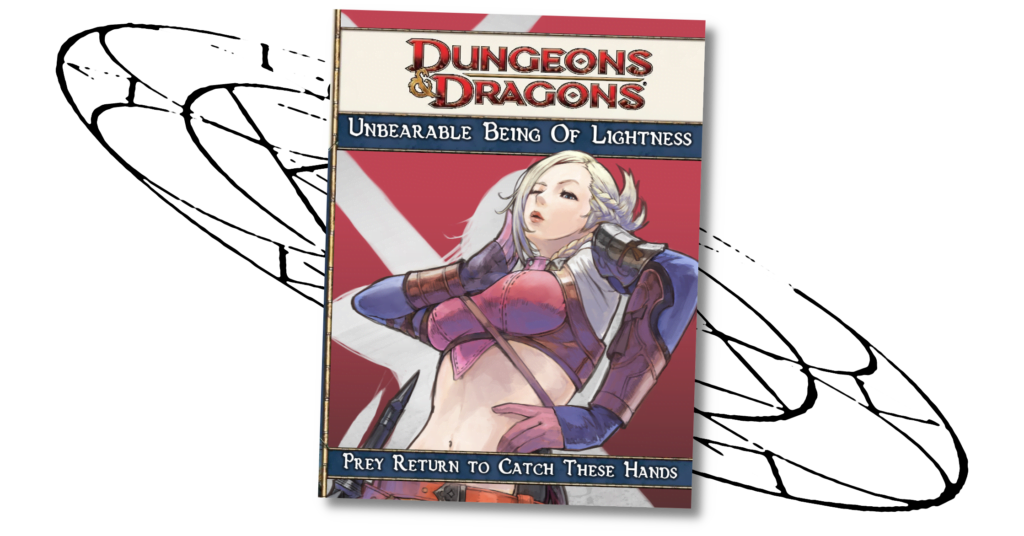
How To Be: Zelgadis (in 4e D&D)
In How To Be we’re going to look at a variety of characters from Not D&D and conceptualise how you might go about making a version of that character in the form of D&D that matters on this blog, D&D 4th Edition. Our guidelines are as follows:
- This is going to be a brief rundown of ways to make a character that ‘feels’ like the source character
- This isn’t meant to be comprehensive or authoritative but as a creative exercise
- While not every character can work immediately out of the box, the aim is to make sure they have a character ‘feel’ as soon as possible
- The character has to have the ‘feeling’ of the character by at least midway through Heroic
When building characters in 4th Edition it’s worth remembering that there are a lot of different ways to do the same basic thing. This isn’t going to be comprehensive, or even particularly fleshed out, and instead give you some places to start when you want to make something.
Another thing to remember is that 4e characters tend to be more about collected interactions of groups of things – it’s not that you get a build with specific rules about what you have to take, and when, and why, like you’re lockpicking your way through a design in the hopes of getting an overlap eventually. Character building is about packages, not programs, and we’ll talk about some packages and reference them going forwards.
There’s always going to be a challenge when you translate a character from a game into a different medium. These How To Be articles are about the process of taking a character represented in a fictional form and move them across into the game so that you can connect with their concept in a mechanical space. What, though, if the character started as a mechanical expression and then became part of a fiction?
What is it like to make a D&D character out of a character who is, in a lot of ways, just someone else’s D&D character?
Let’s talk about Zelgadis, from Slayers.
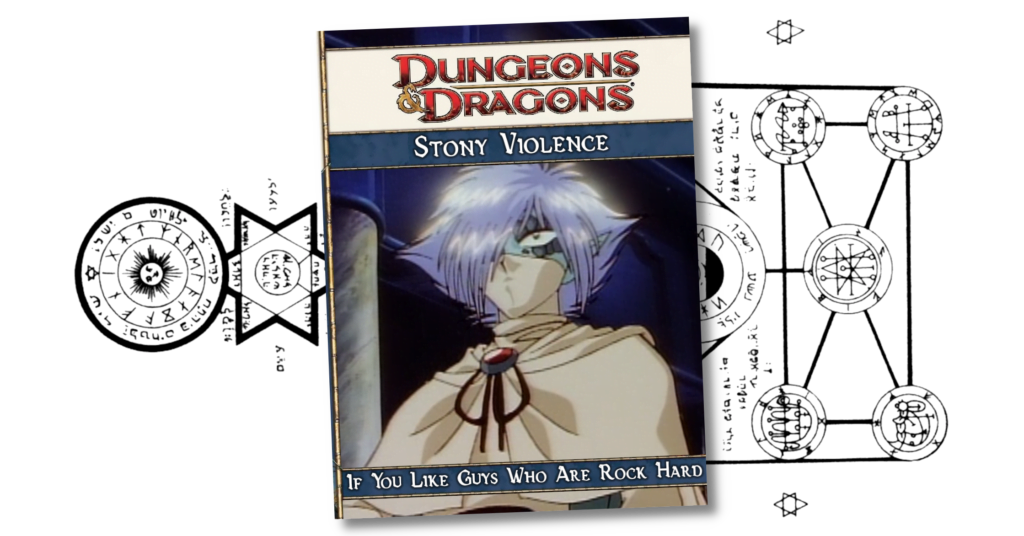
How To Be: Akane Tendo (in 4e D&D)
In How To Be we’re going to look at a variety of characters from Not D&D and conceptualise how you might go about making a version of that character in the form of D&D that matters on this blog, D&D 4th Edition. Our guidelines are as follows:
- This is going to be a brief rundown of ways to make a character that ‘feels’ like the source character
- This isn’t meant to be comprehensive or authoritative but as a creative exercise
- While not every character can work immediately out of the box, the aim is to make sure they have a character ‘feel’ as soon as possible
- The character has to have the ‘feeling’ of the character by at least midway through Heroic
When building characters in 4th Edition it’s worth remembering that there are a lot of different ways to do the same basic thing. This isn’t going to be comprehensive, or even particularly fleshed out, and instead give you some places to start when you want to make something.
Another thing to remember is that 4e characters tend to be more about collected interactions of groups of things – it’s not that you get a build with specific rules about what you have to take, and when, and why, like you’re lockpicking your way through a design in the hopes of getting an overlap eventually. Character building is about packages, not programs, and we’ll talk about some packages and reference them going forwards.
You know it’s not an intentional thing, but it seems that in the month of February, How To Be returns to the world of Ranma 1/2. Ah, what a wonderful world, the world where we have characters who fight with brooms or teleport or turn into gods and throw lightning bolts. Who are we going to visit here, in this mysterious world of creative martial arts?
Oh wait it’s in the subject you clicked on to go read this.
Continue Reading →How To Be: Some Jojo (in 4e D&D)
In How To Be we’re going to look at a variety of characters from Not D&D and conceptualise how you might go about making a version of that character in the form of D&D that matters on this blog, D&D 4th Edition. Our guidelines are as follows:
- This is going to be a brief rundown of ways to make a character that ‘feels’ like the source character
- This isn’t meant to be comprehensive or authoritative but as a creative exercise
- While not every character can work immediately out of the box, the aim is to make sure they have a character ‘feel’ as soon as possible
- The character has to have the ‘feeling’ of the character by at least midway through Heroic
When building characters in 4th Edition it’s worth remembering that there are a lot of different ways to do the same basic thing. This isn’t going to be comprehensive, or even particularly fleshed out, and instead give you some places to start when you want to make something.
Another thing to remember is that 4e characters tend to be more about collected interactions of groups of things – it’s not that you get a build with specific rules about what you have to take, and when, and why, like you’re lockpicking your way through a design in the hopes of getting an overlap eventually. Character building is about packages, not programs, and we’ll talk about some packages and reference them going forwards.
And now, it’s time to engage with something that is a challenge on two axes: First, the challenge presented by unpicking what it even means to make it, and second, the challenge of dealing with the standard memetic conversation that unrolls when you bring it up.
We’ve been a Touhou. We’ve been an Ukyou. And it’s time, now finally, it’s time, to be a Jojo.
Continue Reading →How To Be: The Covers of 2021
When I do the How To Be cover graphics, I’m also very self-impressed with them as their own jokes/visual pieces. Presented here then is a summary of 2021’s How To Be entries for the year, with an overview of what you might want to use these articles for.
Continue Reading →How To Be: Kipo (in 4e D&D)
In How To Be we’re going to look at a variety of characters from Not D&D and conceptualise how you might go about making a version of that character in the form of D&D that matters on this blog, D&D 4th Edition. Our guidelines are as follows:
- This is going to be a brief rundown of ways to make a character that ‘feels’ like the source character
- This isn’t meant to be comprehensive or authoritative but as a creative exercise
- While not every character can work immediately out of the box, the aim is to make sure they have a character ‘feel’ as soon as possible
- The character has to have the ‘feeling’ of the character by at least midway through Heroic
When building characters in 4th Edition it’s worth remembering that there are a lot of different ways to do the same basic thing. This isn’t going to be comprehensive, or even particularly fleshed out, and instead give you some places to start when you want to make something.
Another thing to remember is that 4e characters tend to be more about collected interactions of groups of things – it’s not that you get a build with specific rules about what you have to take, and when, and why, like you’re lockpicking your way through a design in the hopes of getting an overlap eventually. Character building is about packages, not programs, and we’ll talk about some packages and reference them going forwards.
Kipo and the Age of Wonderbeasts is a Netflix TV series created by Radford Sechrist that started its life as a webcomic. The series is something I’ve praised in the past as being uncomplicatedly excellent. Set in a post-apocalyptic far future populated with anthropomorphic animals, it’s a story of a journey of adventure, beset on all sides by a dangerous villain with superpowers who, if he catches our heroes, may destroy their ability to ever defy him. It’s a great adventure structure, and one you should feel free to steal, and central to it all is the character of Kipo, a girl with pink skin whose position in the story is at the intersection of multiple sequences of events, set in motion before she was even born.
And like, I don’t normally do this, but I’m going to put a spoiler warning here. If you read these articles idly, and think you’d like to watch Kipo at some point, you should go do that before reading this article, because I’m going to talk about some stuff Kipo can do that isn’t obvious from the start of the story. I mean, oh okay, shock and horror, Kipo is special, obviously, you know that and I know that just looking at the fact the series is named after her, but nonetheless, I just want you to know, going on, that there be spoilers.
Good?
Good.
Okay, onwards.
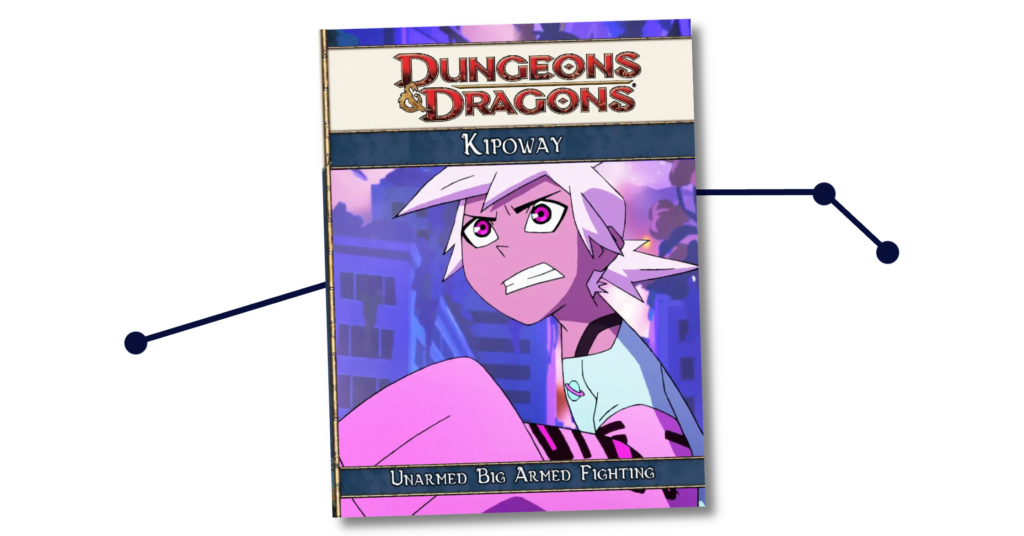
How To Be: Kuchiki Rukia (in 4e D&D)
In How To Be we’re going to look at a variety of characters from Not D&D and conceptualise how you might go about making a version of that character in the form of D&D that matters on this blog, D&D 4th Edition. Our guidelines are as follows:
- This is going to be a brief rundown of ways to make a character that ‘feels’ like the source character
- This isn’t meant to be comprehensive or authoritative but as a creative exercise
- While not every character can work immediately out of the box, the aim is to make sure they have a character ‘feel’ as soon as possible
- The character has to have the ‘feeling’ of the character by at least midway through Heroic
When building characters in 4th Edition it’s worth remembering that there are a lot of different ways to do the same basic thing. This isn’t going to be comprehensive, or even particularly fleshed out, and instead give you some places to start when you want to make something.
Another thing to remember is that 4e characters tend to be more about collected interactions of groups of things – it’s not that you get a build with specific rules about what you have to take, and when, and why, like you’re lockpicking your way through a design in the hopes of getting an overlap eventually. Character building is about packages, not programs, and we’ll talk about some packages and reference them going forwards.
In Bleach, one of the most central characters to the early narrative is one Rukia Kuchiki. Introduced in the first episode, she is the bridge of our previous point-of-view character into the spirit world as an outsider. She is a character from another world, deprived of powers in our world, who has to guide Ichigo, a seemingly ordinary dude who can see ghosts, into seeing the immensely complicated reality that spiderwebs about him about societies full of special rules and seemingly arbitary boundaries. Rukia is this sort of mix of gremlin energy, doing things like building a micro room in Ichigo’s closet, ostentatious self-importance due to her noble heritage, and very legitimate expertise in spiritual matters. It’s the sudden loss of Rukia that marks the transition between the first two major arcs of Bleach, where all the fun we’ve had up until now is suddenly framed as something you have to pay for. The society, the life, the world that is waiting outside of the fun of highschool appears and demands that all that fun is over and now there is a duty.
I assume at some point after that she gets super powers and reunites with Ichigo and they have cool adventures and the story doesn’t run in place for nine years.
Anyway!
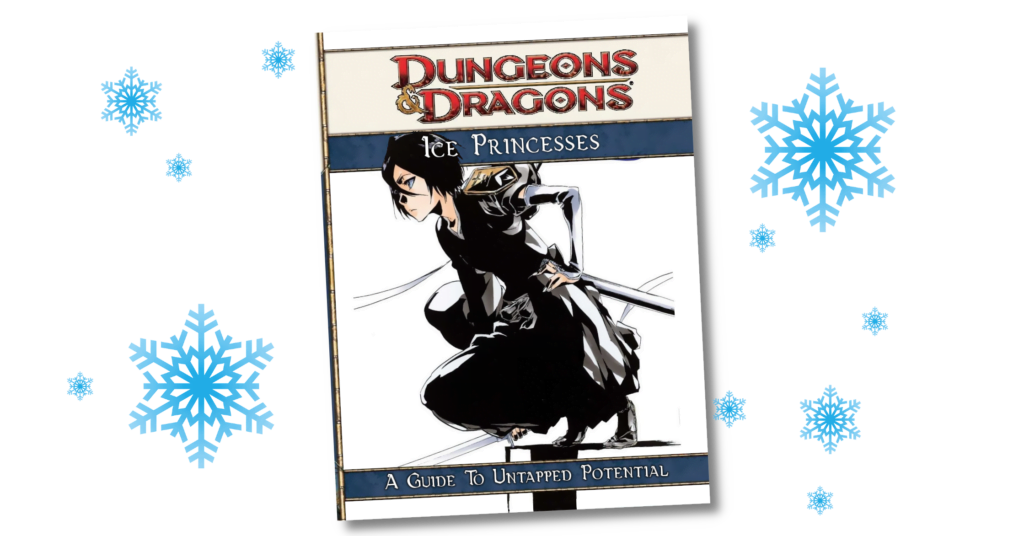
How To Be: May (in 4e D&D)
In How To Be we’re going to look at a variety of characters from Not D&D and conceptualise how you might go about making a version of that character in the form of D&D that matters on this blog, D&D 4th Edition. Our guidelines are as follows:
- This is going to be a brief rundown of ways to make a character that ‘feels’ like the source character
- This isn’t meant to be comprehensive or authoritative but as a creative exercise
- While not every character can work immediately out of the box, the aim is to make sure they have a character ‘feel’ as soon as possible
- The character has to have the ‘feeling’ of the character by at least midway through Heroic
When building characters in 4th Edition it’s worth remembering that there are a lot of different ways to do the same basic thing. This isn’t going to be comprehensive, or even particularly fleshed out, and instead give you some places to start when you want to make something.
Another thing to remember is that 4e characters tend to be more about collected interactions of groups of things – it’s not that you get a build with specific rules about what you have to take, and when, and why, like you’re lockpicking your way through a design in the hopes of getting an overlap eventually. Character building is about packages, not programs, and we’ll talk about some packages and reference them going forwards.
You may remember that we’ve looked, earlier in the year, at the character Rock Howard, from Garou: Mark Of The Wolves. Fight games are rich fodder for this kind of exercise because they so often about what a character is and less about what the character does. Simply put, fight games don’t make much sense.
There’s a scale at work, of course. Some games make more sense, with a deliberate intention to ground the storytelling in something serious. Some games, on other hand, are pretty silly, and don’t really care about how silly they get.
Anyway, Guilty Gear.
